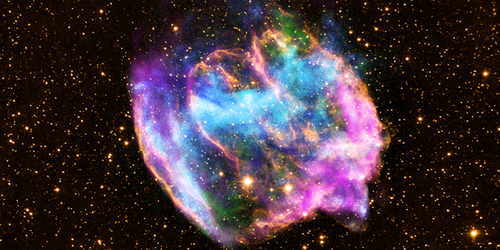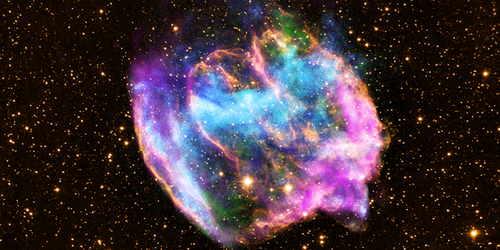LIGO’s Black Hole Got the Boot
When a massive star dies, it explodes as a supernova that leaves a neutron star or black hole behind. But it remains unclear whether a newborn black hole can be sent scooting away from the event, because there’s not enough black hole velocity data to be certain. Richard O'Shaughnessy from the Rochester Institute of Technology, New York, and colleagues now say that such a “kicked” black hole looks possible. The team’s analysis of the second event recorded by the LIGO gravitational-wave detectors suggests that a natal kick must have been imparted to the more massive member of the duo of black holes that generated the waves.
Previous analysis of LIGO’s second event, known as GW151226, indicated that it was produced by the merger of two black holes with masses 8 and 14 times the Sun’s mass. Further, it suggested that the more massive object had a spin axis misaligned with the orbital axis of the pair by some 25 to 80 degrees. In their new kinematic analysis of the event, O'Shaughnessy and co-workers assume that the black hole pair formed from a binary star system in which both stars exploded as supernovae, as opposed to forming separately and later being brought together. They find that, in this scenario, where the spin and orbital axes start out aligned, the more massive black hole must have received a kick of more than 50 km/s from its supernova progenitor in order to produce the deduced spin–orbit misalignment. Such a large kick is challenging to explain within conventional supernova theory.
This research is published in Physical Review Letters.
–Ana Lopes
Ana Lopes is a Senior Editor of Physics.





